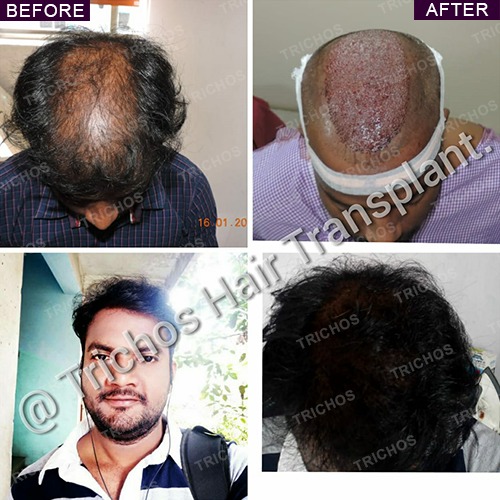What is the Ideal Gap Between Two Hair Transplant Sessions?
This is a common query that many hair transplant patients are quite curious to know: Should you need to wait for some time after the first hair transplant? Is there any ideal gap between two hair transplants? Do you need a second transplant is another oft-repeated question?
In this educational video, Dr John Watts – a noted dermatologist, trichologist and hair transplant surgeon in Hyderabad – demystifies all these queries with scientific explanations. He has successfully performed over 1900+ hair transplant procedures so far.
Second Hair Transplant: Analysis
Before considering a second hair transplant, your hair transplant expert needs to take a closer look at your level of baldness in the present and how it will develop or shape up in future based on your family history or heredity.
“The foremost consideration is whether the extent of the current level of baldness gives the transplant surgeon sufficient time to complete the procedure in one session or not,” explained Dr John.
If the baldness level extends from the front to the crown and the back, then one session may not be enough to carry out the procedure. Sometimes, a second hair transplant session may be advised or planned for a patient if the first one had been botched up or failed by an inexperienced doctor or baldness develops at the later stage due to the ageing process due to heredity issues.
“In such a scenario, a second hair transplant is considered,” informed Dr John.
Ideal Gap Between Two Hair Transplants:
This brings us to the million-dollar question: what is the ideal time between two hair transplants? “Ideally, one has to wait for 6-7 months to undergo a second hair transplant session,” answered Dr John Watts.
The reasons are not difficult to understand as takes 6-7 months for the transplanted hair to fully grow healthily. In the first 10-20 days of the transplant, the transplanted hair shafts fall and, in their place, new hair starts growing from the stem cells of the transplanted hair grafts. The new hair starts growing and the process needs 2-3 months.
It is pertinent to note that the ideal gap between two hair transplants also provides sufficient time for the hair transplant expert to closely observe the hair growth pattern and efficiently plan the future course of action for a better outcome in the second hair transplant session.
“There is also the healing process that we need to keep in mind as the scalp needs time to recover fully after the first hair transplant procedure and 6-7 months provide sufficient time. The more the delay the better,” informed Dr John Watts.
Conclusion
There is, however, a catch as a patient doesn't need to undergo a second hair transplant if they are comfortable with the results and appearance with the first hair transplant.
“If one has contended with the results of the first hair transplant that may effectively cover the front of the scalp and may still leave the back are somewhat bald, then no second hair transplant is required,” said Dr John.
Sometimes, the transplanted hair on the front may grow enough to cover the baldness at the back. “In such a situation too, one may feel that a second hair transplant may not be required,” informed Dr John, while urging the viewers to share the video among their friends for awareness.
Trichos provides state-of-the-art treatment for various hair loss conditions and offers advanced hair transplant solutions. Call us Today for a Life-Changing Experience.
Book an appointment for expert guidance


About
Causes
Alopecia
Restoration
Procedures
Locations
Disclaimer: While hair transplants are generally safe and effective, as with any medical procedure, there can be minimal and temporary side effects based on specific or underlying medical condition of the individual patient. Please consult in person with our qualified medical team at Trichos for a thorough assessment of your specific condition and individualized guidance on the potential risks and benefits associated with our hair restoration treatments.
Learn more about Medical Consent for Surgeries.



